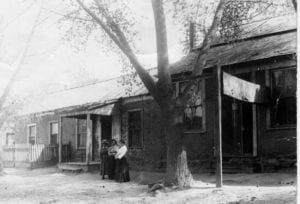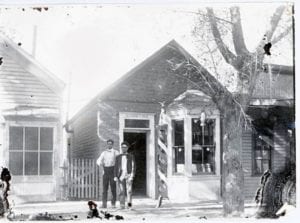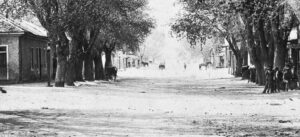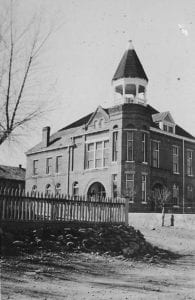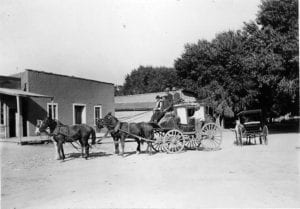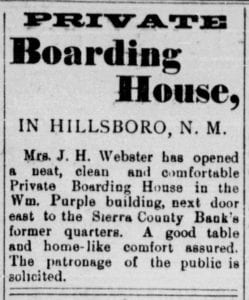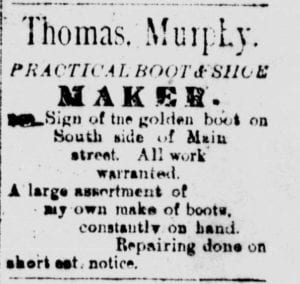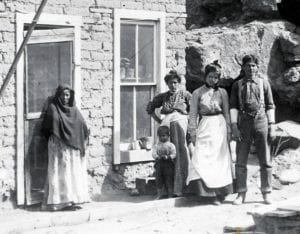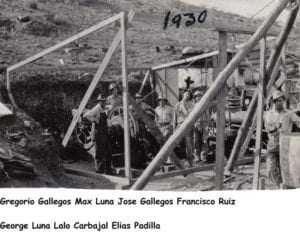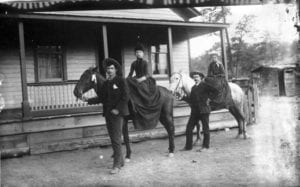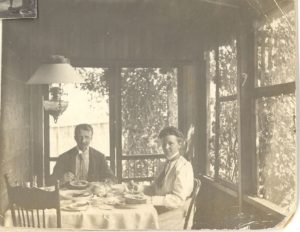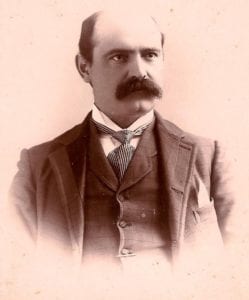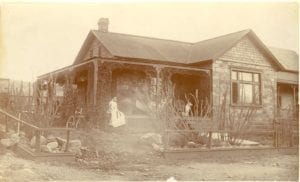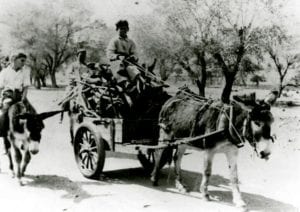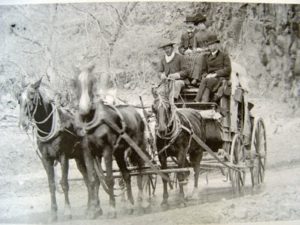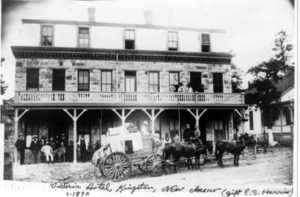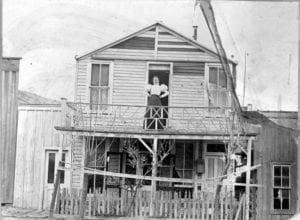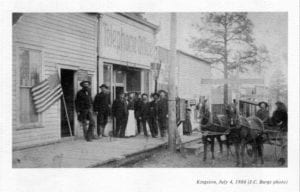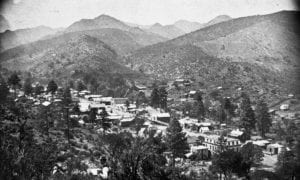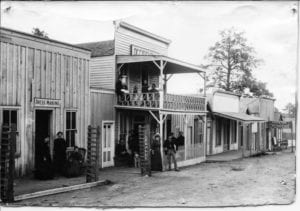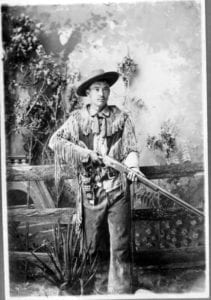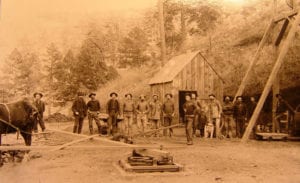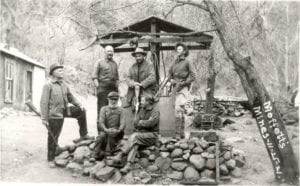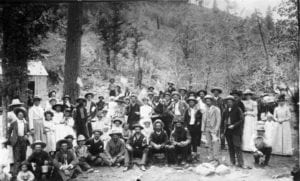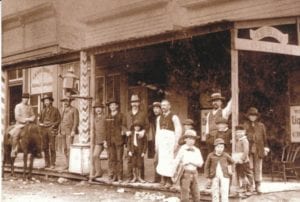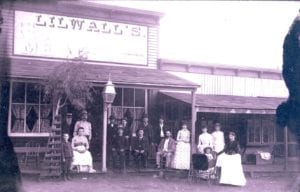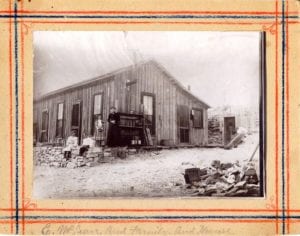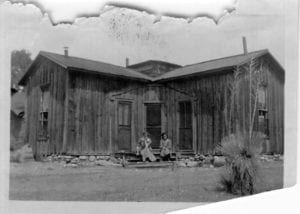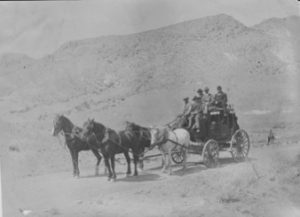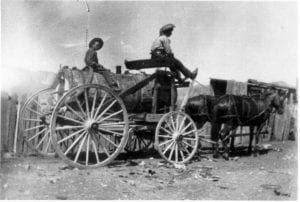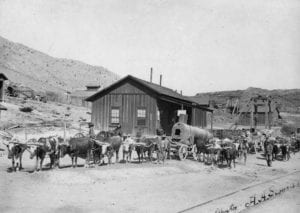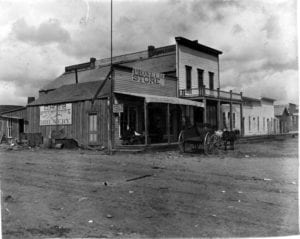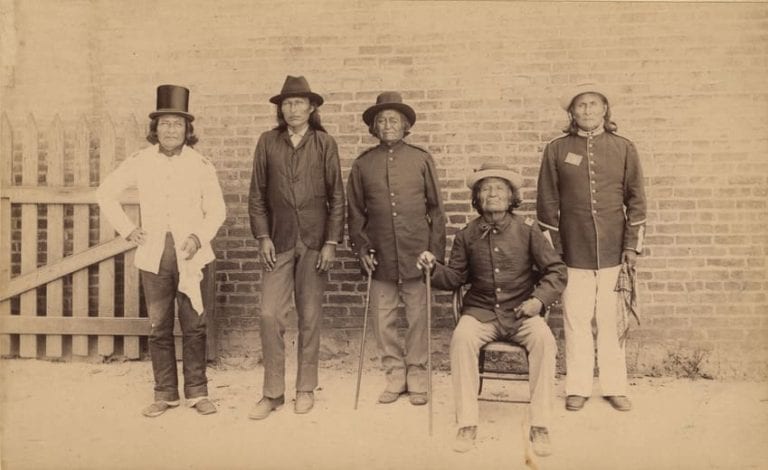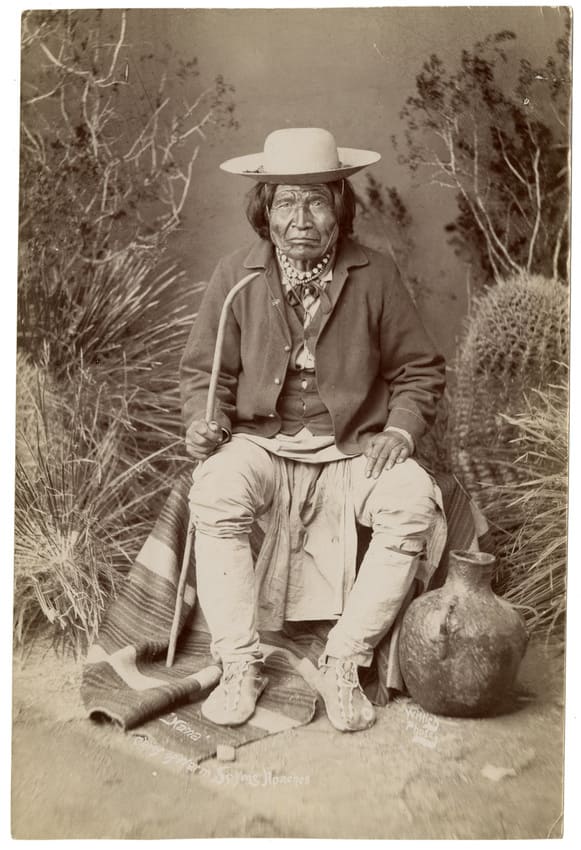Gallery
Photos from the late 1800s:
Hillsboro, Kingston and Lake Valley New Mexico
Click on any photo for a larger image
Hillsboro Photos
The mining boom in the Black Range began in 1877 when several prospectors founded the town of Hillsboro (originally Hillsborough) on Percha Creek near where they struck gold. This boom town became the county seat when the Territorial legislature created Sierra County in 1884. With its economy based on gold and its status as the county seat, Hillsboro remained strong when the devaluation of silver in the 1890s devastated the other Black Range mining towns. But Hillsboro, too, suffered a gradual decline. In 1936 county citizens voted to move the seat to the expanding town of Hot Springs (now Truth of Consequences) down on the Rio Grande. Emblematic of the continuing decline, Hillsboro’s magnificent courthouse erected in 1892 was dismantled in 1939. Hillsboro’s population today counts only a hundred or so full-time residents, mostly retirees.
Kingston Photos
Silver was discovered in Kingston New Mexico in 1882. After that, it became a boomtown. People descended from long distances, and population estimates vary from a few hundred to thousands. At its peak, Kingston did boast of multiple saloons and grocery stores, a brewery, several newspapers, an opera house, several hotels, and a bank. When silver was de-valued in 1893, the town began to decline. By the early 1900s, Kingston was on its way to becoming a ghost town. Many original buildings were demolished for materials to be used elsewhere. Nestled in the mountains, surrounded by the Gila National Forest, today Kingston is a quiet community of just over 40 residents. It is the home of the Historic Percha Bank and the Black Range Lodge, the Kingston Ghost Town Museum, and the office of Aldo Leopold Living History performances.
Lake Valley Photos
A small farming and ranching community sprang up some fifteen miles south of Hillsboro along ephemeral lakes on Berrenda Creek. The label Lake Valley was extended to an arid location further south where the discovery of silver created a flourishing mining community. One of the richest silver lodes ever discovered, the Bridal Chamber, led to the building of a railroad spur to Lake Valley, the only rail line ever into the Black Range. The 1893 devaluation of silver together with a major fire on Main Street in 1895 devastated the town. Lake Valley today is a ghost town with no residents. The old schoolhouse is a museum maintained by the Bureau of Land Management.
Chihene - The Warm Springs Apache
New Mexico is home to many different Native Americans. The most recently arrived are the Navajo and Apache, members of the Athabascan language family. The Warm Springs Apache are one of the bands that came to live in southwestern New Mexico. These more nomadic groups often raided established settlements. Taking over New Mexico in 1848, the U.S. was determined to pacify the marauders. The Mescalero Apaches were the first to be confined at Fort Sumner in 1863, followed shortly by the Navajos. Congress passed legislation in 1871 that made all Indians wards of the nation. The government was to support them and have local Indian agents manage their affairs. A post with a resident Indian agent was set up for the Mescalero Apaches.
The Western Apache are several related bands. One group was the Warm Springs Apache, or as they call themselves, Chihene. They spent much of the year in the Black Range and migrated to Mexico in the winter. They were first given a reservation at Ojo Caliente nine miles north of Monticello. Here in the place, they considered home, they lived peacefully under the leadership of Victorio.
But federal policies and pressure from miners and ranchers led the government in 1877 to relocate the Warm Springs Apaches to a reservation at San Carlos established for the Chiricahua Apaches, a group made famous by Cochise and Geronimo. San Carlos was in a dismal desert in eastern Arizona; a place that was completely different from the Apache homelands and certainly not a place to create a successful life. The Warm Springs band were confined with other Apaches and relations were strained. Victorio’s band escaped twice. The government allowed them to return to Ojo Caliente for a short while only to move them back to San Carlos and then to the Mescalero reservation.
Victorio was outraged. In September 1879 he led his band of 500 people with maybe 100 warriors on a year-long path of revenge against the “White Eyes” invader. Pursued by U.S. cavalry forces, Victorio’s group escaped into Mexico. But there in October 1880, they were ambushed by Mexican forces and most were massacred, including Victorio.
Remnants of the band with a few warriors managed to escape. Nana, 75 years old and crippled by injury, led the survivors back into the Black Range to recuperate and prepare for revenge. Nana’s raids began in January 1881 at Chloride and moving south along the Black Range into Mexico. He then came back up east of El Paso. For two more months, the small band of Chihene warriors with their families traveled a thousand miles fighting the much larger and far better equipped U.S. forces, finally fleeing back into Mexico.
Nana, along with Geronimo, surrendered in September of 1886. All the Apaches were shipped off to begin 27 years of internment first in Florida, then in Alabama, and finally at Fort Sill, Oklahoma. Nana died at Fort Sill in 1896.

